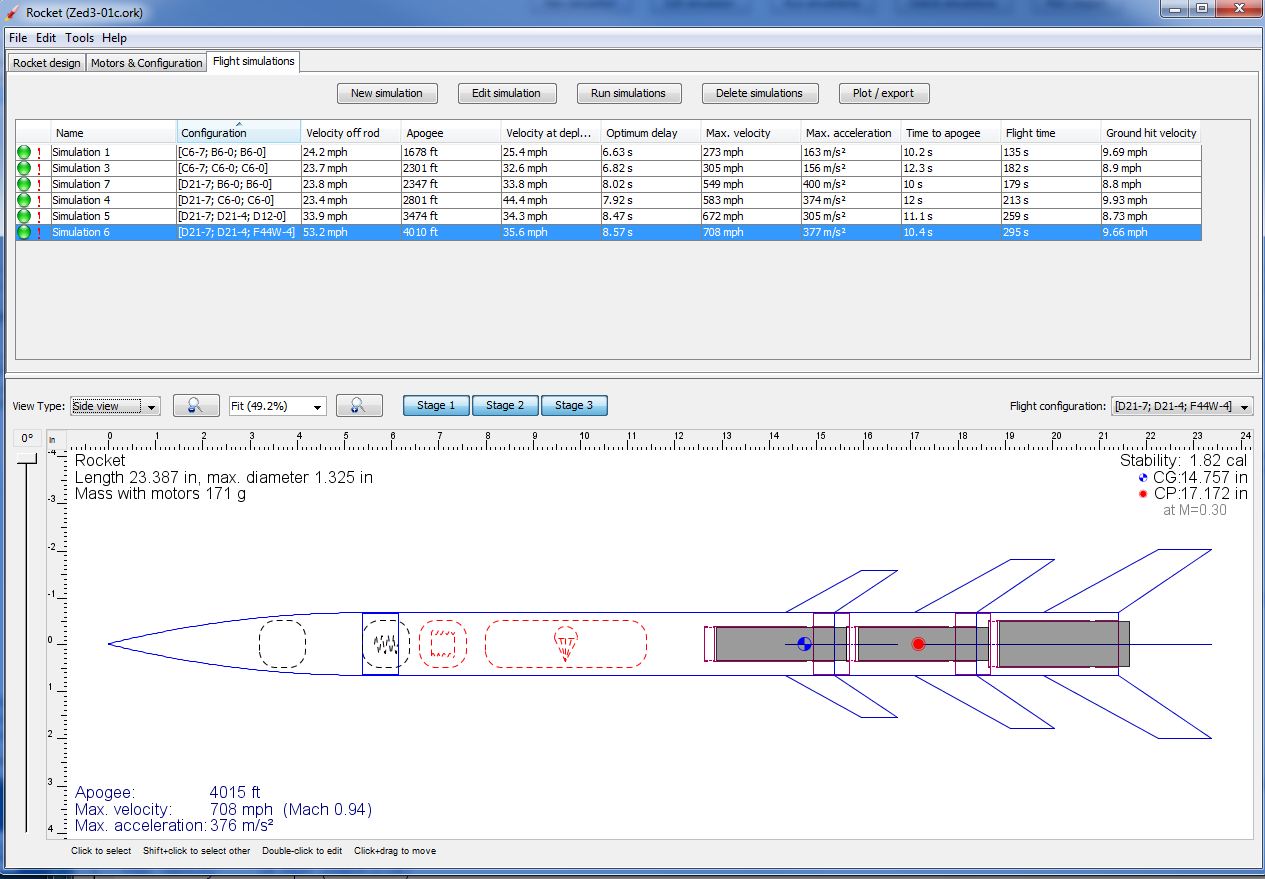So, after all this new information you could (if you want) stick with single stages like: two new rockets, one 18 mm and one 24 mm, both either minimum diameter or close to it, built of slightly stronger stuff like papered fins and epoxy construction. Place Quest or Aerotech D motors in the 18 mm and Aerotech E and F motors in the 24. Watch'm soar to remarkable heights, if you don't lose sight of them in the first 200 feet because they're going so fast! All the talk of staging is good and valid, but not necessary for a while.
The Apogee Aspire, which takes 29 mm motors, can break mach 1 on a high thrust motor or break 1 mile on an Apogee (Aerotech manufactured) F10.
The Apogee Aspire, which takes 29 mm motors, can break mach 1 on a high thrust motor or break 1 mile on an Apogee (Aerotech manufactured) F10.




